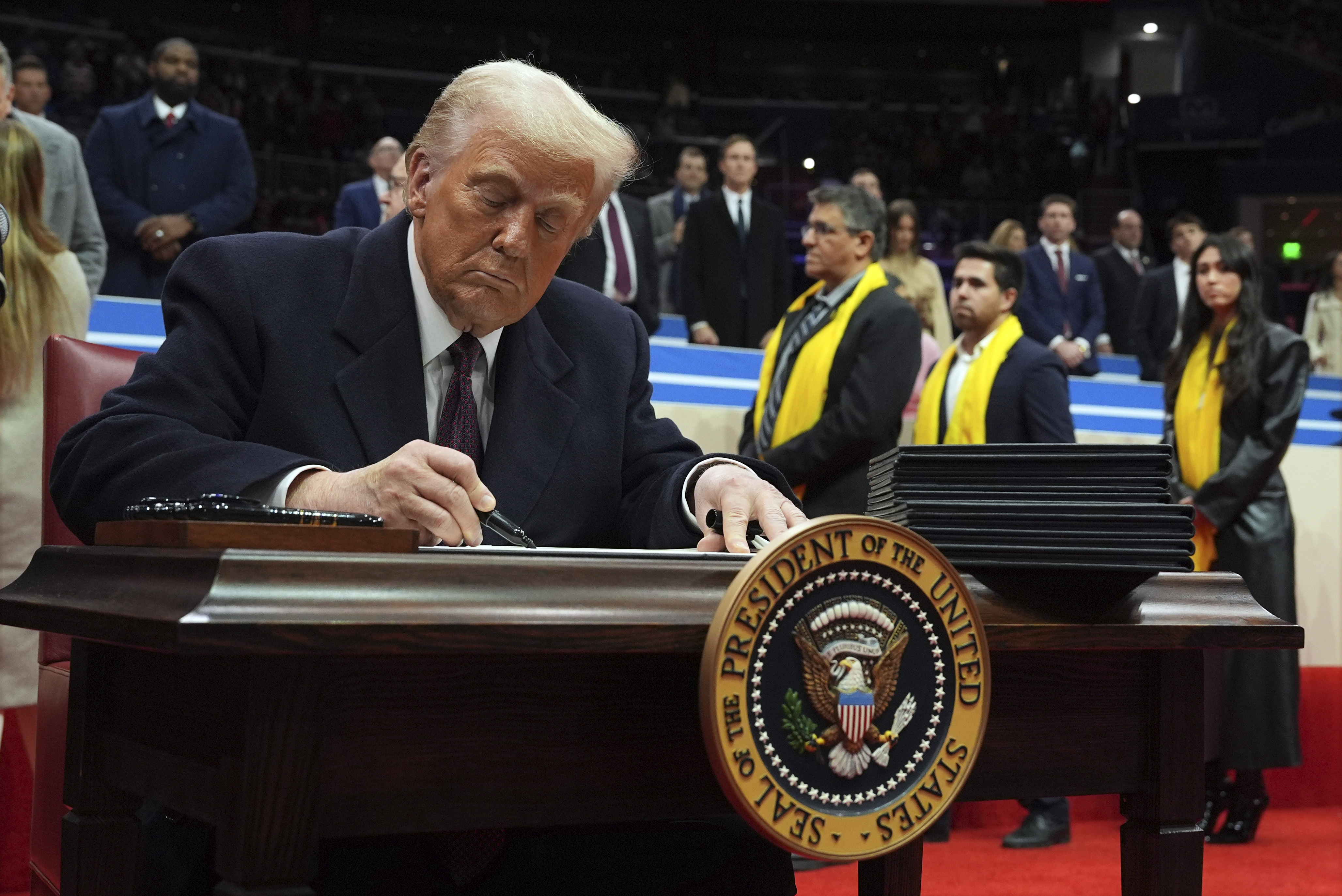The Justice Department announced criminal charges Tuesday against Hamas leader Yahya Sinwar and other senior militants in connection with the Oct. 7, 2023, rampage in Israel, marking the first effort by American law enforcement to formally call out the masterminds of the attack.
The seven-count criminal complaint filed in federal court in New York City includes charges of conspiracy to provide material support to a foreign terrorist organization, conspiracy to murder U.S. nationals and conspiracy to use weapons of mass destruction, resulting in death. It also accuses Iran and Lebanon's Hezbollah of providing financial support and weapons, including rockets, that were used in the attack.
The impact of the case may be mostly symbolic given that Sinwar is believed to be hiding out in tunnels and the Justice Department says three of the six defendants named in the complaint are believed now to be dead. The complaint was originally filed under seal in February to give the U.S. time to try to take into custody the then-Hamas leader, Ismail Haniyeh, but was unsealed Tuesday weeks after Haniyeh's death and because of other developments in the region, the Justice Department said.
"The charges unsealed today are just one part of our effort to target every aspect of Hamas’ operations,” Attorney General Merrick Garland said in a video statement. “These actions will not be our last.”
Get top local stories in Southern California delivered to you every morning. Sign up for NBC LA's News Headlines newsletter.
The charges come as the White House says it is developing a new cease-fire and hostage deal proposal with its Egyptian and Qatari counterparts to try to bring about an agreement between Israel and Hamas to end the nearly 11-month war in Gaza. A U.S. official, who was not authorized to talk publicly about the case and spoke on condition of anonymity, told The Associated Press there was no reason to believe the charges would affect the ongoing negotiations.
National security spokesman John Kirby said the recent “executions” of six hostages, including one American, Hersh Goldberg-Polin, by Hamas “underscores the sense of urgency” in the talks.
U.S. & World
News from around the country and around the globe
Sinwar was appointed the overall head of Hamas after the killing of Haniyeh in Iran and sits atop Israel’s most-wanted list. He is believed to have spent most of the past 10 months living in tunnels under Gaza, and it is unclear how much contact he has with the outside world. He was a long-serving Palestinian prisoner freed in an exchange of the type that would be part of a cease-fire and hostage release deal.
Other Hamas leaders charged include Haniyeh; Marwan Issa, the deputy leader of Hamas’ armed wing in Gaza, who helped plan last year's attack and who Israel says was killed when fighter jets struck an underground compound in central Gaza in March; Khaled Mashaal, another Haniyeh deputy and a former leader of the group thought to be based in Qatar; Mohammed Deif, Hamas’ longtime shadowy military leader, who is thought to be dead following an Israeli airstrike in southern Gaza in July; and Lebanon-based Ali Baraka, Hamas’ head of external relations.
During the Oct. 7 attack, militants killed some 1,200 people, mostly civilians. The indictment calls the massacre the “most violent, large-scale terrorist attack to date” in Hamas' history. It details how Hamas operatives who arrived in Israel with “trucks, motorcycles, bulldozers, speedboats, and paragliders” engaged in a brutal campaign of violence throughout southern Israel that included rape, genital mutilation and machine-gun shootings at close range.
Israel’s retaliatory offensive has killed over 40,000 Palestinians, according to Gaza’s Health Ministry, which does not distinguish between civilians and combatants in its count. The war has caused widespread destruction and forced the vast majority of Gaza’s 2.3 million residents to flee their homes, often multiple times.



